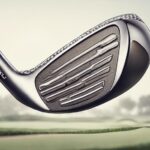- 7 Top Flite Golf Clubs XL for Improved Performance - September 28, 2024
- Top Flite Golf Clubs: Top 5 Reasons to Choose Them - September 28, 2024
- Top 3 Golf Club Fitters for a Perfect Swing - September 28, 2024
You're about to reveal the secrets of golf club loft angles, a vital aspect of the game that can greatly impact your ball flight, distance, and overall performance. Understanding club loft angles is key to optimizing your game, as higher loft results in higher ball flight, while lower loft produces a penetrating shot. A standardized loft chart provides reference points for typical loft angles per club type, with drivers ranging from 5.5-12.5 degrees and irons covering 20-45 degrees. Now that you've got a solid grasp on the basics, it's time to delve deeper into the nuances of loft measurement and adjustment to elevate your game to the next level.
Key Takeaways
- Understanding club loft angles is crucial for optimizing ball flight, with higher loft resulting in higher shots and lower loft producing more penetrating shots.
- The average loft chart provides a standardized reference for typical loft angles per club type, ranging from 5.5-12.5 degrees for drivers to 44-60 degrees for wedges.
- Accurate loft measurement is vital for club performance, and investing in a loft and lie machine ensures precise measurements for making performance adjustments.
- Customizing loft settings can enhance distance, accuracy, and control by aligning with individual swing styles, with professional fitting sessions identifying ideal loft settings.
- Loft adjustments can be made for different clubs, including drivers, fairway woods, hybrids, irons, wedges, and putters, to optimize trajectory, distance, ball control, launch, spin, and rolling distance.
Understanding Club Loft Angles
You need to understand that club loft angles, which range from 5.5-12.5 degrees for drivers, 13-17 degrees for fairway woods, 14-24 degrees for hybrids, and 20-45 degrees for irons, play a critical role in determining the height and distance the ball will travel. The loft angle of your golf club is what affects the ball's flight, and understanding this concept is vital to optimize your performance on the course.
The loft of golf clubs is specifically designed to suit various shots, and understanding these angles will help you make informed decisions about which club to use in different situations. For instance, a higher loft angle will result in a higher ball flight, while a lower angle will produce a lower, more penetrating shot.
You can even fine-tune your ball flight preferences by adjusting the loft angle of your club by bending the hosel. To ensure precision, a loft and lie machine can be used to measure the loft angle of your golf clubs.
Average Loft Chart for Golf Clubs
The average loft chart for golf clubs provides a standardized reference point for understanding the typical loft angles associated with each club type, allowing golfers to make informed decisions about their equipment and shot selection.
As you assemble your iron sets, understanding the typical loft ranges for each club type is crucial. Drivers, for instance, typically range from 5.5-12.5 degrees, with the average being around 8-10.5 degrees.
Fairway woods have lofts ranging from 13-17 degrees, while hybrid clubs usually have lofts between 14-24 degrees.
Irons, which cover a loft range of 20-45 degrees, are where you'll find the most variation. Within your iron sets, you'll find higher lofted clubs designed to launch the ball higher and shorter clubs that produce lower, more piercing shots.
Measuring Loft of Your Golf Clubs
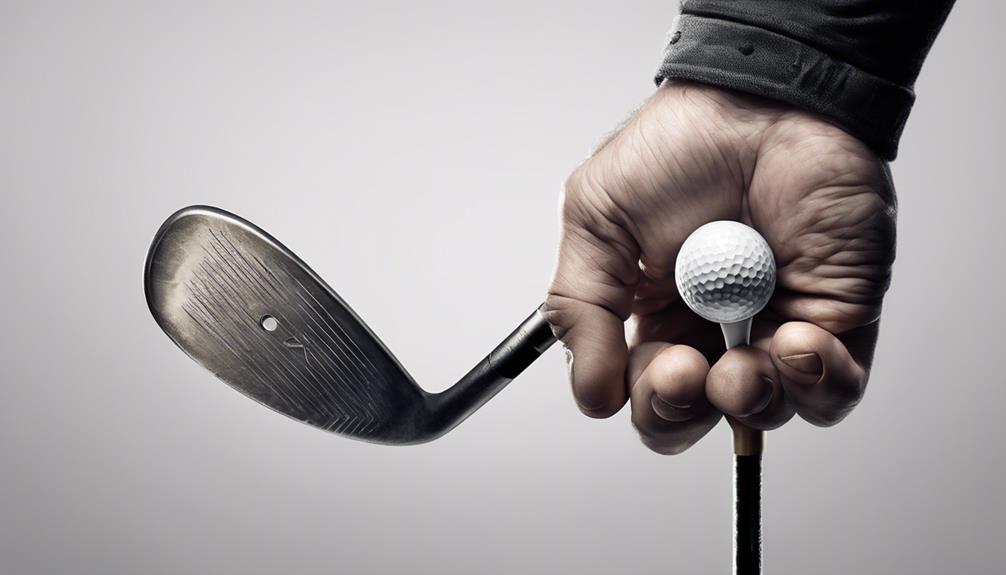
Accurate measurement of your golf clubs' loft is crucial, as it directly affects the club's performance and your game's overall success. To get a precise reading, you can take your clubs to a golf shop or work with a club fitter who uses a loft and lie machine. This machine measures the angle between the clubface and the ground, providing an exact reading of the loft of your golf clubs.
Keep in mind that while manufacturers provide specifications for each club model, there may be slight variations due to manufacturing processes. A loft and lie machine is a worthwhile investment for precise measurements, costing between $500-$1,500. By knowing the exact loft of your clubs, you'll be better equipped to make adjustments for top performance.
Adjusting Loft for Better Performance
Now that you've measured the loft of your golf clubs, it's time to fine-tune their performance by adjusting the loft settings.
You'll need to decide whether to customize the club loft to fit your swing style and speed, and explore the loft bending options available to you.
Customizing Club Loft Settings
Your swing's unique characteristics can be matched with optimized loft settings through customization, accessing better performance on the course.
By fine-tuning your degree loft, you can achieve the perfect ball flight for your game. Adjustable loft options allow you to personalize your club performance, catering to your specific needs and playing style.
A professional fitting session can identify your ideal loft settings, taking into account your individual swing characteristics. Through customizing loft settings, you can experience instant game improvement by optimizing launch conditions.
This tailored approach enables you to maximize your distance, accuracy, and overall control. By understanding the intricacies of loft customization, you can enhance your overall club fitting experience, leading to better on-course results.
Loft Bending Options Available
Fine-tuning your iron's loft through bending can reveal a significant performance boost, as even a slight adjustment can make a tangible difference in your game.
Many irons can be bent to adjust the loft, typically up to 2 degrees either way, allowing you to fine-tune your iron lofts for peak performance. However, not all metals can be bent, so it's crucial to consult with a club fitter to determine the best options for your clubs. They can advise on the feasibility of loft bending based on the club material, ensuring you don't risk breaking your irons.
Each degree of loft adjustment can impact distance by 2-4 yards, making even small adjustments significant. Using a loft and lie machine, clubs can be accurately adjusted for top performance. By understanding the loft bending options available, you can take your game to the next level.
With the right adjustments, you can achieve more consistent shots and improve your overall performance. Don't be afraid to experiment and find the perfect loft settings for your irons – your game will thank you.
Measuring Loft for Fit
To enhance your iron's performance, you'll need to accurately measure its loft, a process that involves using specialized equipment like loft and lie machines to determine the ideal angle for your swing.
This precise measurement is important, as even a slight adjustment in loft can greatly impact your game.
When measuring loft, keep in mind that:
- A 1-degree change in loft can result in a 2-4 yard difference in distance
- Bending the hosel can adjust loft angles to suit individual swing speeds
- Professional fitting sessions help identify ideal loft settings for improved performance
Loft Options for Different Clubs
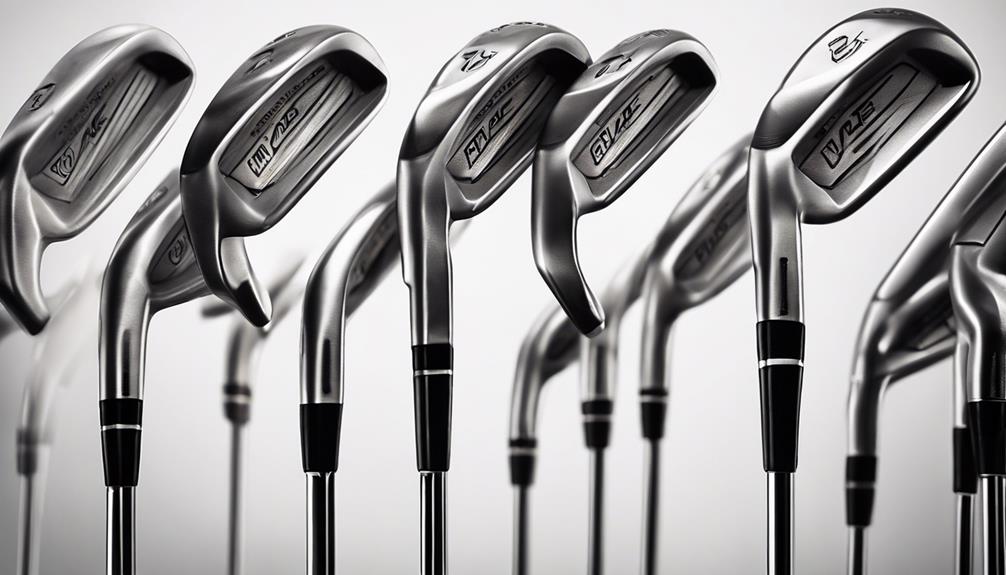
As you explore the world of golf club lofts, you'll discover that each club type offers a unique range of loft options. Your driver, for instance, can have a loft between 8 and 10.5 degrees, depending on your swing speed and preferences.
Now, let's take a closer look at the specific loft ranges for drivers, fairway woods, and hybrids, and how they can impact your game.
Driver Loft Options
When choosing a driver, you'll come across a variety of loft options, typically ranging from 9 to 12.5 degrees, each tailored to enhance performance based on individual swing characteristics. The best loft for you'll depend on your swing speed, tempo, and personal preferences.
Here are some key considerations to keep in mind:
- Lower lofts (around 9 degrees) are suitable for golfers with faster swing speeds, aiming for more distance off the tee.
- Higher loft drivers (around 12.5 degrees) are more suitable for players with slower tempos, helping achieve an optimal launch angle.
- Adjustable driver lofts allow you to fine-tune your ball flight preferences, enhancing performance based on your swing tendencies.
Fairway Wood Loft
Choose a fairway wood loft that suits your swing style and shot preferences, as the right loft can greatly impact your overall performance and versatility on the course. Fairway wood loft typically ranges from 13.5 to 16.5 degrees, offering a balance between driver distance and iron precision.
If you're a golfer who struggles with getting the ball airborne, consider a higher lofted fairway wood, which is easier to hit off the ground and promotes higher launch angles. On the other hand, if you have a faster swing speed, a lower lofted fairway wood can provide more distance off the tee.
Many modern fairway woods also come with adjustable hosels, allowing you to fine-tune your loft preferences for best performance. By selecting the right fairway wood loft, you can fill distance gaps between your driver and irons, giving you more versatility in your shot-making capabilities.
With the right loft, you'll be able to tackle a variety of shots with confidence, taking your game to the next level.
Hybrid Loft Range
You'll find hybrid loft ranges spanning from 14 to 24 degrees, a versatility spectrum that bridges the gap between fairway woods and irons. This range allows you to choose the right hybrid for your game, whether you need more distance or better control.
When selecting a hybrid, consider the loft that best suits your swing. Here are some key considerations:
- Lower lofted hybrids (14-18 degrees): Replace long irons for better forgiveness and distance.
- Higher lofted hybrids (19-24 degrees): Ideal for approach shots and controlling trajectory.
- Adjusting the loft: Fine-tune your hybrid's performance to fill distance gaps in your bag.
Driver Loft and Swing Speed
Typically, golfers with varying swing speeds require different driver lofts to enhance their ball flight and overall performance. As you explore the world of driver lofts, you'll find that the average loft for most golf drivers is around 10 degrees, suitable for a wide range of players.
However, if you have a faster swing speed, you'll likely benefit from lower lofted drivers, ranging from 8-10.5 degrees. This lower loft will help you achieve a more penetrating ball flight with less spin.
On the other hand, if you have a slower swing speed, higher loft drivers, up to 12-13 degrees, can help launch the ball with ideal spin. But what if you're unsure about your ideal loft? That's where adjustable drivers come in, allowing you to fine-tune your ball flight preferences with loft changes up to 4 degrees.
You might be inspired by pros like Bryson DeChambeau, who's experimented with low lofts, even using driver lofts as low as 5 degrees in tour events. By understanding how driver loft and swing speed interact, you'll be well on your way to mastering your driver game.
Fairway Woods and Hybrid Loft
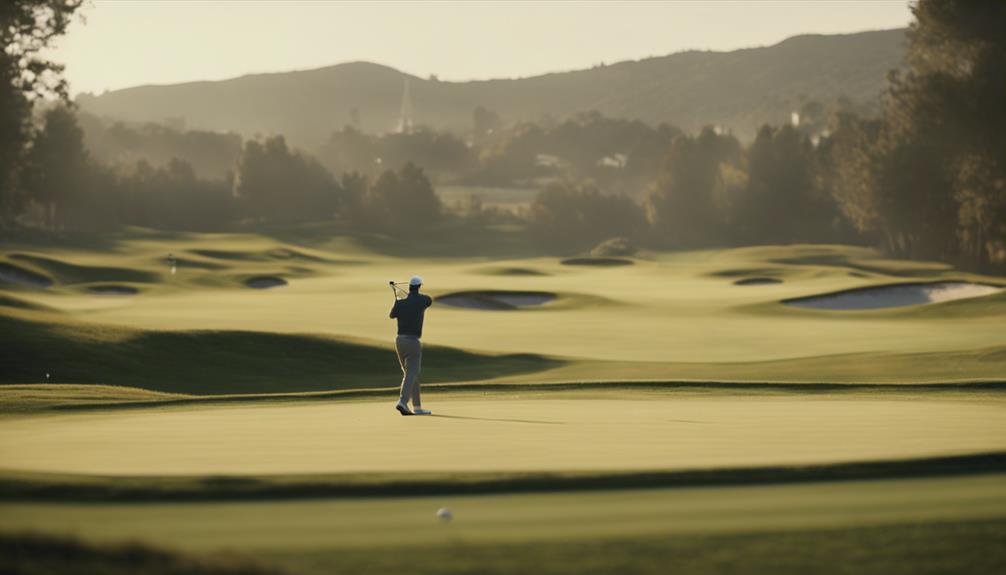
Fairway woods and hybrids are designed to fill specific gaps in your bag, with loft angles that cater to diverse shot requirements, ranging from long shots off the tee or fairway to precise approach shots. As you explore the loft chart, you'll notice that fairway woods typically have lofts ranging from 13 to 17 degrees, while hybrids have loft angles that range from 14 to 24 degrees.
Here are some key takeaways to keep in mind:
- Lower lofts for longer shots: Fairway woods have lower lofts compared to hybrids, making them ideal for longer shots off the fairway or tee.
- Hybrids for balance: Hybrids bridge the gap between fairway woods and irons with loft angles that provide a balance of distance and control.
- Loft influences trajectory and distance: The loft of fairway woods and hybrids directly influences the trajectory and distance of the ball during your shot.
Iron Loft and Shaft Variations
As you explore the world of irons, understanding that iron loft, which ranges from 20-45 degrees, plays a vital role in determining the trajectory and distance of your shots is essential. Lower-numbered irons have lower lofts for longer shots, while higher-numbered irons have higher lofts for shorter shots.
When it comes to shaft variations, you'll find that different flexes impact ball distances. This means you need to take into account the relationship between your iron loft and shaft characteristics to maximize performance. Mid to high lofted irons, for instance, offer forgiveness and smooth swing speed, making them ideal for players seeking distance and accuracy.
Your iron set's loft progression is designed to provide consistent distance gapping between clubs. To get the most out of your irons, you need to grasp how each club's performance is influenced by its loft. By mastering this relationship, you'll be able to optimize your performance and achieve consistent results.
Wedge Loft and Ball Control
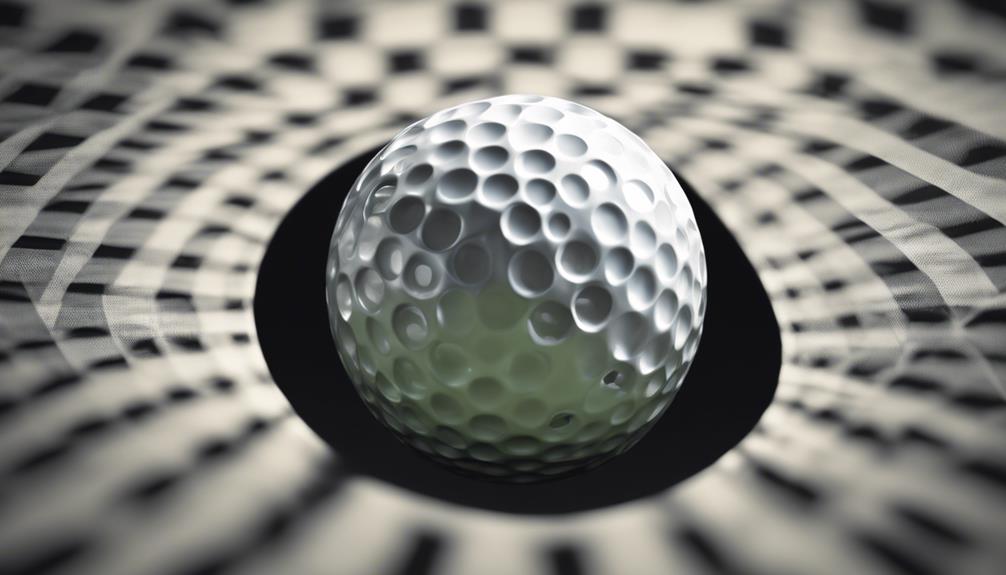
When you shift from irons to wedges, you'll experience a new level of precision and control, thanks to the significantly higher loft angles of wedges, which range from 44 to 60 degrees. This increased loft allows for a higher launch and more spin, giving you the ability to stop the ball quickly on the green.
To master your short game, it's crucial to understand how to select the right wedge loft for the job. Here are a few key considerations:
- Higher loft, slower speed: Lob wedges with lofts over 56 degrees are designed for high-launch, high-spin shots that demand a more delicate touch.
- Mid-range versatility: Gap wedges with lofts around 48-52 degrees offer a balance of distance and control, making them ideal for approach shots from the fairway or rough.
- Sand wedge precision: With lofts ranging from 54-58 degrees, sand wedges are designed to escape bunkers and thick rough, requiring a higher launch and more spin to get the ball out quickly.
Putter Loft and Rolling Distance
You'll need to refine your putting game by understanding how putter loft influences the roll distance of your ball, since a slight variation in loft can greatly impact your shot's outcome.
A putter's loft, typically ranging from 2-4 degrees, plays an important role in determining the distance your ball rolls on the green. A lower lofted putter produces less backspin and more roll, resulting in a smoother, more consistent roll. On the other hand, higher lofted putters can help lift the ball over bumps or imperfections on the green, but may produce more backspin and less roll.
To achieve the desired distance and accuracy on putts, it's crucial to understand how putter loft affects roll distance. Experimenting with different lofts can help you find the best setting for your game. By refining your putter loft, you can develop a more consistent and accurate putting stroke, leading to improved scores and more confidence on the green.
Customizing Loft for Game Improvement

Fine-tuning your loft settings can release instant game improvement by allowing you to dial in your ball flight preferences. By customizing your loft, you can optimize distance and accuracy, leading to more consistent shots and better overall performance. To get the most out of your clubs, consider professional fitting sessions to identify your ideal loft settings.
Here are some benefits of customizing your loft:
- Personalized loft adjustments allow you to tailor your clubs to your unique swing style, ensuring that you're getting the most out of every shot.
- Enhanced club performance means you'll see improvements in distance and accuracy, leading to more confidence on the course.
- Streamlined fitting process means you'll spend less time trying out different clubs and more time focusing on your game.
Frequently Asked Questions
How Many Degrees of Loft Should You Have Between Clubs?
When determining the best loft gap between clubs, you should aim for 4-5 degrees to maintain consistent distance coverage, ensuring a smooth loft progression for precise club selection, distance control, and ideal swing mechanics.
What Is a Standard 7-Iron Loft?
You'll find that a standard 7-iron loft falls between 30 to 34 degrees, with most modern clubs settling around 31 to 32 degrees, influencing distance and trajectory, making it essential for precise club selection.
How Do I Choose a Golf Club Loft?
When selecting a golf club loft, you'll want to take into account your swing speed, launch angle, and desired ball flight, then experiment with loft adjustments to optimize distance control, spin rate, and overall performance, seeking equipment fitting guidance if needed.
How to Determine Golf Club Loft?
You determine golf club loft by checking manufacturer specs, but for accuracy, get clubs measured at a golf shop using a loft and lie machine, considering your swing speed, ball flight, and club fitting to optimize your loft angle.
Conclusion
Now that you've cracked the code to mastering golf club loft, your game is about to take flight. With a deeper understanding of club loft angles, you can fine-tune your swing to precision.
Remember, every degree counts, and a slight adjustment can be the difference between a birdie and a bogey. By customizing your loft, you'll be driving your competition green with envy.
Take your newfound knowledge to the course and watch your scores soar!


